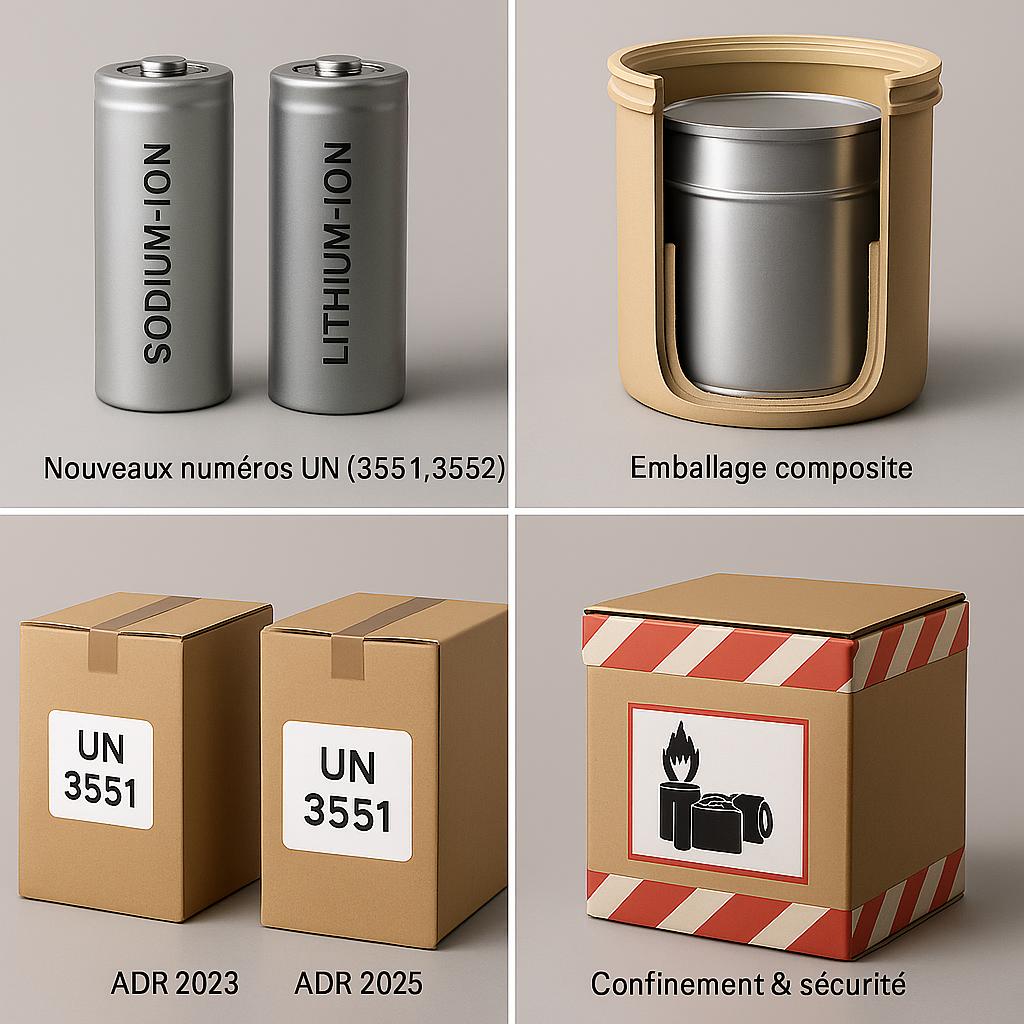
ADR 2025 Regulation
Every two years, the landscape of road transport of dangerous goods evolves. The entry into force of the new version of ADR on January 1, 2025, with its usual transition period until June 30, brings its share of modifications, clarifications and new requirements. For shippers, logistics managers and safety advisors, anticipating these changes is not a simple formality; it's the key to ensuring operational continuity, avoiding supply chain disruptions and maintaining an impeccable level of safety.
The risk of discovering non-compliance at the time of shipment is very real: a package refused by a carrier, a blockage during a road inspection, or even administrative sanctions. How can you ensure that your processes and packaging are ready for 2025?
This guide aims to synthesize the main changes in ADR 2025 that directly impact the choice and use of UN certified packaging, and to give you the keys to approach this transition with complete peace of mind.
Reminder: What is ADR and Who is Concerned?
Before diving into the new features, a brief reminder is essential. ADR (European Agreement concerning the International Carriage of Dangerous Goods by Road) is the international treaty that harmonizes the rules for road transport of these goods in Europe and in many other signatory countries.
Its fundamental principle, often misunderstood, is that of shipper responsibility. It is the company that hands over the goods to the carrier that is legally responsible for its classification, packaging, labeling and documentation. The use of UN certified packaging is the most direct manifestation of taking this responsibility into account.
Main Changes in ADR 2025 for Packaging
The 2025 edition of ADR, although not a revolution, brings significant adjustments that reflect technological developments and field experience feedback. Here are the points that deserve your attention.
The Arrival of Sodium-ion Batteries and their Packaging Instructions
The most notable novelty is the formal introduction of sodium-ion batteries in the regulation. Less expensive and using more abundant materials, they represent a growing alternative to lithium batteries. ADR 2025 assigns them new UN numbers and dedicated packaging instructions:
UN 3551 (SODIUM-ION BATTERIES)
UN 3552 (SODIUM-ION BATTERIES CONTAINED IN EQUIPMENT)
New packaging instructions, such as P912, have been created. They define the requirements for rigid outer packaging and protection against short circuits, similar to those for lithium batteries.
Modifications to Requirements for Existing Packaging
Some common packaging instructions have been clarified or modified. For example, clarifications have been made on the use of composite packaging and on test requirements for certain types of recycled plastics used in the manufacture of drums or barrels. It is crucial to verify that the approval reports of your current packaging remain in line with these clarifications.

Evolution of Marking and Labeling
ADR 2025 brings adjustments to marking. The minimum size of certain markings, such as the UN number on packages, has been harmonized to improve visibility. In addition, clarifications have been made on the labeling of overpacks to ensure that all safety information remains clearly visible.
Clarifications on the Transport of Damaged Batteries
The transport of defective, damaged or waste lithium batteries is a major concern. ADR 2025 strengthens and clarifies the requirements of packaging instructions P908 and LP906. It emphasizes the need for risk assessment by the shipper and the use of packaging offering a very high level of containment and protection against chain reactions.
Our Solutions for ADR 2025
Faced with these developments, the question of compliance of your packaging solutions arises. As an expert partner, our role is to anticipate these changes to guarantee you complete peace of mind.
Packaging Already Certified According to the New Standards
Our regulatory watch is constant. Our standard range of certified packaging, whether 4GV cartons, 4DV cases or our isothermal solutions, is designed and tested to be in compliance with the latest versions of regulations. We ensure that the materials, designs and certifications of our products meet or exceed the requirements of ADR 2025.
The Expertise of our Design Office for Complex Cases
If the new rules create a specific need for one of your products, or if you are developing a new technology such as sodium-ion batteries, our design office is at your disposal. We have the expertise to design and certify a tailor-made solution that will be 100% compliant with the new regulation, allowing you to bring your innovations to market without delay.
A Partner to Decipher the Regulation
Our mission doesn't stop at providing packaging. We are here to help you navigate the complexity of ADR. Our team stays informed of the smallest details to guide you towards the simplest, safest and most economical solution, in perfect accordance with ADR 2025.
FAQ: 10 Questions on ADR 2025 and Packaging
Anticipate to Transport Better
Regulatory watch is not an administrative burden, it is an essential component of risk management and logistics efficiency. Anticipating ADR 2025 changes is not just a compliance issue, it is a guarantee of fluidity for your supply chain and proof of your professionalism. With the right partner and the right information, this transition can be done with complete peace of mind, allowing you to focus on your core business.
Do you have doubts about the compliance of your packaging with ADR 2025?
Contact our experts for an analysis of your needs and ensure the continuity of your shipments.
"